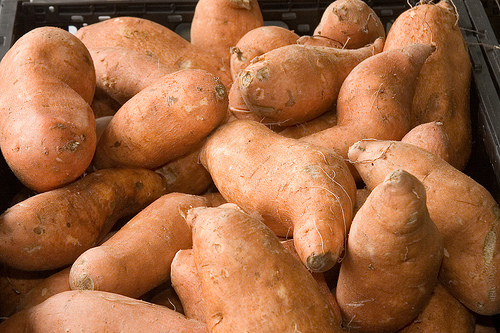
Every year we go through this: is that a yam, or a sweet potato? None of us can remember, and the grocery stores are hardly helpful. I have seen the same grocery store label the same thing either "yam" or "sweet potato," seemingly according to the whims of whoever last stocked the produce department.
I don't know about your family, but every year the "yams vs sweet potatoes" debate is second only to discussions of "second cousin vs cousin twice removed." No one can remember the rules for either, but both sides end up discussing it endlessly.
This year, let's stop the madness once and for all. (And it IS madness. The Huffington Post put together this flow chart to determine if you're eating a yam or a sweet potato. Unfortunately, there are several sweet potato varieties with white flesh, and several yam varieties with orange flesh. Thus, the flow chart is useless.)
What many Americans do not realize is that, with very few exceptions, we are not eating yams. Sweet potatoes are grown domestically in great numbers, thus 99% of the time what you find at the store is in fact a sweet potato. One exception is canned yams… but even then, it's often actually canned sweet potatoes.
Outside the U.S., yams are the norm. Although they are grown in Asia, Africa, Latin America, and the Pacific islands, the world's largest supplier of yams is west Africa. Africa's yams are shipped all over the world, but it's not cost-effective to ship them to America, given that we have plenty of perfectly good sweet potatoes being grown right here.
The confusion in the States arises from USDA regulations, which label orange-fleshed sweet potatoes "yams," and white-fleshed sweet potatoes "sweet potatoes." Thanks, guys!
The good news is that yams and sweet potatoes, although completely different plants, are virtually interchangeable.
Image courtesy Flickr/Wally Hartshorn

0 comments